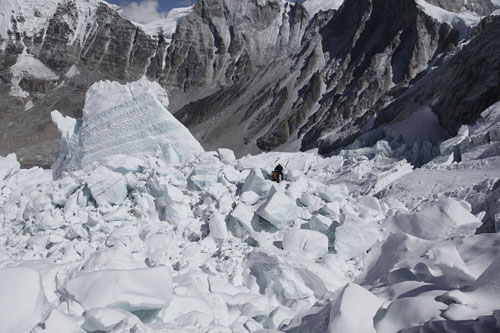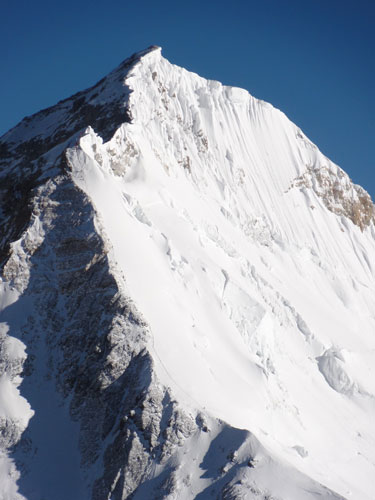|
|
The South
Asian Life & Times - SALT |
|
|||
|
Contents Adventure & Sport Five
Ultimate Everest Apa
Sherpa-21 Times
|
|
||||
|
The Way to the Summit
Base Camp | Khumbu Icefalls | Western CWM |
Lhotse Face | Yellow Band |
Reinhold Messner, the
distinguished mountaineer and the first to climb Mount Everest without
supplemental oxygen, aptly described his summit experience: " I am nothing
more than a single narrow gasping lung, floating over the mists and
summits." The three-sided,
pyramid-like 29,035’ high Mount Everest was chiselled into its unique
and distinctive shape by mighty glaciers,
which, not-so-mighty now,
continue to sculpt it – Kangshung Glacier
on the east; East Rongbuk Glacier on the northeast; Rongbuk Glacier on the
north; and Khumbu Glacier on the west and southwest. The three faces are
delineated by three distinct ridges on the north, south, and west sides of
the mountain – hence the terms North Face, South Face etc.
The standard routes for climbing Everest
are the South Col-Southeast Ridge route from Nepal, and the North
Col-Northeast Ridge from Tibet.
Mount Everest might not
be the coldest place on planet earth but temperatures at the summit remain
below freezing all year round, ranging from nearly 0°F
(about -18°C ) in July to as low as -70°F
(-60°C) in December and January! There are two climbing seasons on the Everest – the summer season in May, before the monsoons set in, is the usual and more popular season. The winter season, which commences in October, is the preferred time for the brave-hearts. An Everest climb usually takes about six weeks. It
all begins at the base camp!
|
|||||
|
Copyright © 2000 - 2013 [the-south-asian.com]. Intellectual Property. All rights reserved. |
|||||

